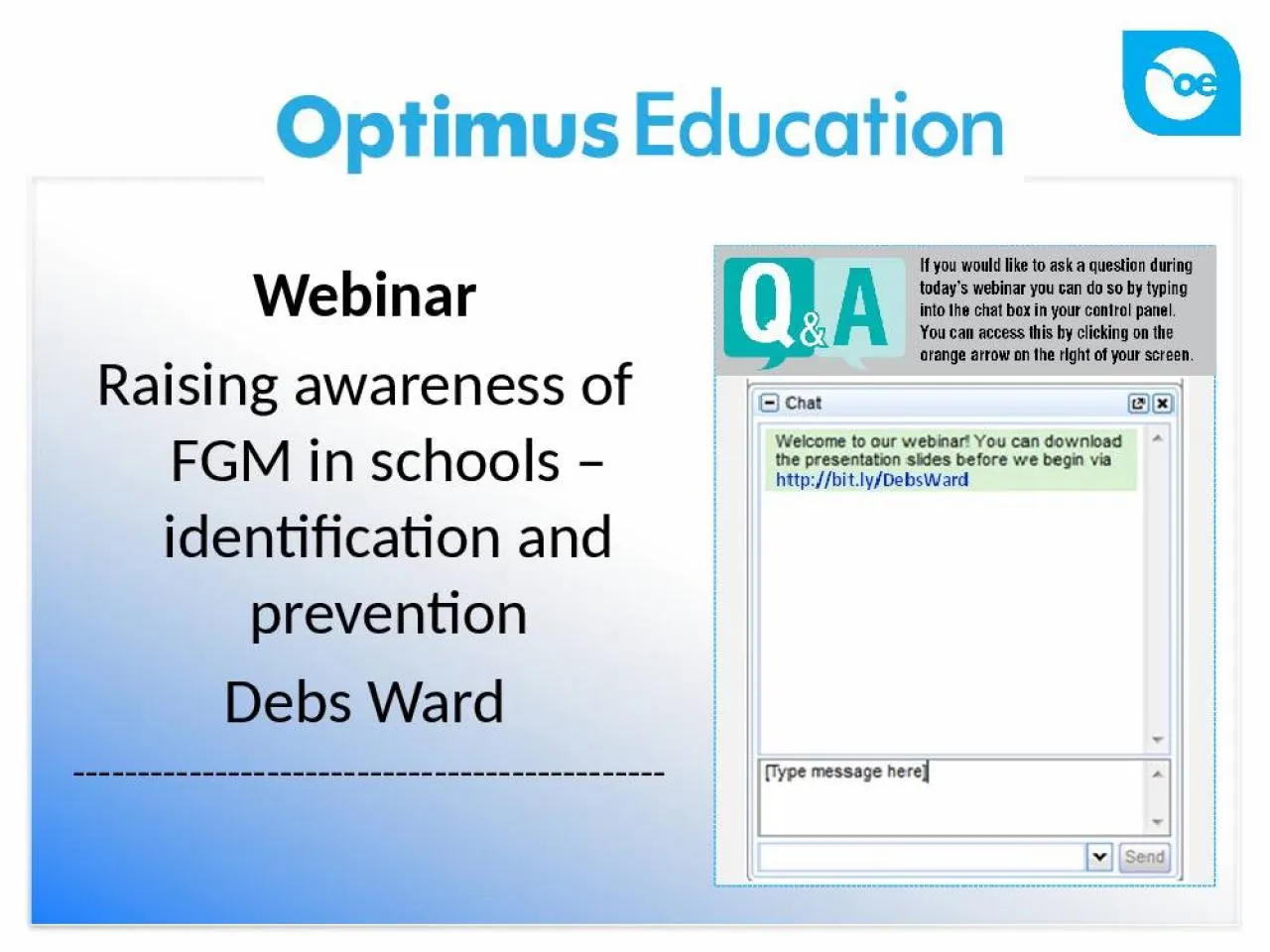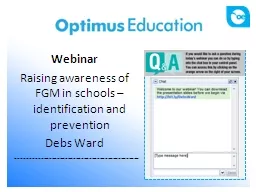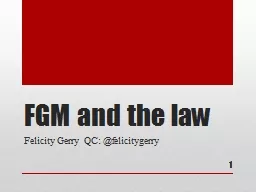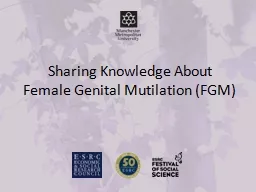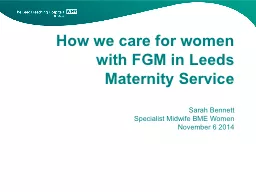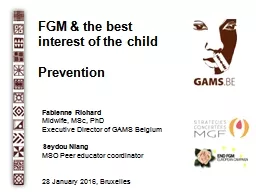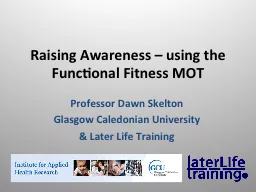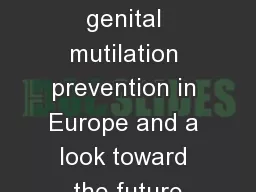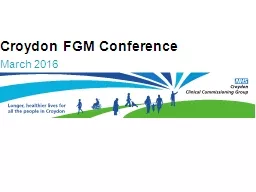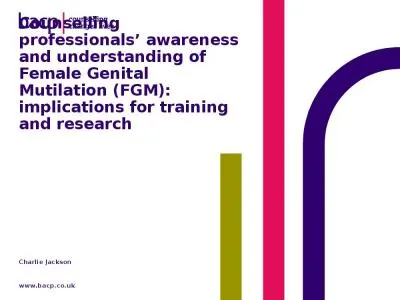PPT-Webinar Raising awareness of FGM in schools – identification and prevention
Author : lucinda | Published Date : 2022-05-14
Debs Ward Todays aims What is FGM and why do DSPs need to be concerned Identification of risk factors and warning signs What to do if you have a concern
Presentation Embed Code
Download Presentation
Download Presentation The PPT/PDF document "Webinar Raising awareness of FGM in scho..." is the property of its rightful owner. Permission is granted to download and print the materials on this website for personal, non-commercial use only, and to display it on your personal computer provided you do not modify the materials and that you retain all copyright notices contained in the materials. By downloading content from our website, you accept the terms of this agreement.
Webinar Raising awareness of FGM in schools – identification and prevention: Transcript
Download Rules Of Document
"Webinar Raising awareness of FGM in schools – identification and prevention"The content belongs to its owner. You may download and print it for personal use, without modification, and keep all copyright notices. By downloading, you agree to these terms.
Related Documents

